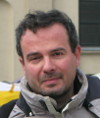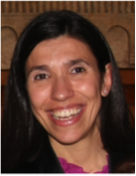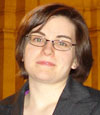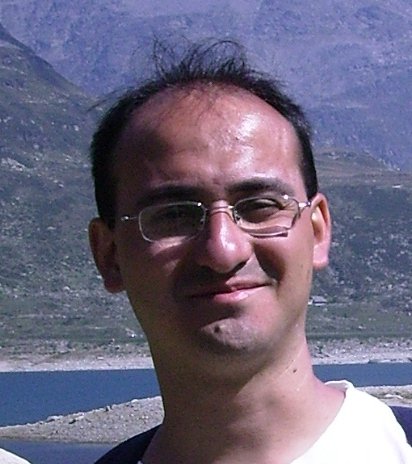Studying at the University of Verona
Here you can find information on the organisational aspects of the Programme, lecture timetables, learning activities and useful contact details for your time at the University, from enrolment to graduation.
Academic calendar
The academic calendar shows the deadlines and scheduled events that are relevant to students, teaching and technical-administrative staff of the University. Public holidays and University closures are also indicated. The academic year normally begins on 1 October each year and ends on 30 September of the following year.
Course calendar
The Academic Calendar sets out the degree programme lecture and exam timetables, as well as the relevant university closure dates..
| Period | From | To |
|---|---|---|
| I semestre | Oct 1, 2019 | Jan 31, 2020 |
| II semestre | Mar 2, 2020 | Jun 12, 2020 |
| Session | From | To |
|---|---|---|
| Sessione invernale d'esame | Feb 3, 2020 | Feb 28, 2020 |
| Sessione estiva d'esame | Jun 15, 2020 | Jul 31, 2020 |
| Sessione autunnale d'esame | Sep 1, 2020 | Sep 30, 2020 |
| Session | From | To |
|---|---|---|
| Sessione Estiva | Jul 15, 2020 | Jul 15, 2020 |
| Sessione Autunnale | Oct 16, 2020 | Oct 16, 2020 |
| Sessione Autunnale Dicembre | Dec 11, 2020 | Dec 11, 2020 |
| Sessione Invernale | Mar 17, 2021 | Mar 17, 2021 |
| Period | From | To |
|---|---|---|
| Festa di Ognissanti | Nov 1, 2019 | Nov 1, 2019 |
| Festa dell'Immacolata | Dec 8, 2019 | Dec 8, 2019 |
| Vacanze di Natale | Dec 23, 2019 | Jan 6, 2020 |
| Vacanze di Pasqua | Apr 10, 2020 | Apr 14, 2020 |
| Festa della Liberazione | Apr 25, 2020 | Apr 25, 2020 |
| Festa del Lavoro | May 1, 2020 | May 1, 2020 |
| Festa del Santo Patrono | May 21, 2020 | May 21, 2020 |
| Festa della Repubblica | Jun 2, 2020 | Jun 2, 2020 |
| Vacanze estive | Aug 10, 2020 | Aug 23, 2020 |
Exam calendar
Exam dates and rounds are managed by the relevant Science and Engineering Teaching and Student Services Unit.
To view all the exam sessions available, please use the Exam dashboard on ESSE3.
If you forgot your login details or have problems logging in, please contact the relevant IT HelpDesk, or check the login details recovery web page.
Should you have any doubts or questions, please check the Enrollment FAQs
Academic staff
 mariacaterina.baruffi@univr.it
mariacaterina.baruffi@univr.it
 maurizio.boscaini@univr.it
maurizio.boscaini@univr.it
 rossana.capuani@univr.it
rossana.capuani@univr.it
 vittoria.cozza@univr.it
vittoria.cozza@univr.it
 chiara.nardon@univr.it
chiara.nardon@univr.it
 claudio.tomazzoli@univr.it
claudio.tomazzoli@univr.it
Study Plan
The Study Plan includes all modules, teaching and learning activities that each student will need to undertake during their time at the University.
Please select your Study Plan based on your enrollment year.
1° Year
| Modules | Credits | TAF | SSD |
|---|
2° Year activated in the A.Y. 2020/2021
| Modules | Credits | TAF | SSD |
|---|
1 module among the following3° Year activated in the A.Y. 2021/2022
| Modules | Credits | TAF | SSD |
|---|
1 module among the following| Modules | Credits | TAF | SSD |
|---|
| Modules | Credits | TAF | SSD |
|---|
1 module among the following| Modules | Credits | TAF | SSD |
|---|
1 module among the followingLegend | Type of training activity (TTA)
TAF (Type of Educational Activity) All courses and activities are classified into different types of educational activities, indicated by a letter.
Informational Methods (2020/2021)
Teaching code
4S00995
Academic staff
Coordinator
Credits
6
Language
Italian
Scientific Disciplinary Sector (SSD)
INF/01 - INFORMATICS
Period
II semestre dal Mar 1, 2021 al Jun 11, 2021.
Learning outcomes
The course introduces the fundamental discrete structures by emphasizing their use in the definition of mathematical models of biological relevance. The students will acquire knowledge about the es-sentials of discrete mathematics; formal notions and methods for studying problems by means of computers; methods for representation of biological information; and they will be able to apply such knowledge to analyze biological data of different types (genomic sequences, biological processes, networks of biological interactions) by means of information theoretic concepts.
Program
Part1. Basics of set theory and languages
Relations, equivalences; numerical systems; Fibonacci series (golden ratio, Binet's theorem and applications); multisets, sequences, strings, and languages.
Part2. Discrete functions, dynamics and temporal series:
Metabolic processes; the epidemiological model SIR; geometric progression and Malthus model; population growth models (non linear); elements of dynamical systems
Part3. Elements of computability (formal languages and automata):
Formal grammars and languages; patterns and regular expressions; finite state automata; Turing machines; decidability semidecidability and undecidability.
Part4. Basics of graph theory:
Directed and undirected Graphs and their representations; forests and trees; spanning trees; connectivity problems; structural induction on graphs.
Part5. Elements of Information Theory and compression
Information sources; information measures, entropy, mutual information and informational divergence; information theoretic similarity and dissimilarity measures; uniquely decodable codes and prefix codes; optimal codes; compression based sequence similarity.
| Author | Title | Publishing house | Year | ISBN | Notes |
|---|---|---|---|---|---|
| Stein, Drysdale, Bogart | Discrete Mathematics for Computer Scientists | Pearson | 2011 | 978-0-13-137710-3 | |
| Michael Sipser | Introduction to the Theory of Computation | PWS | 1997 | 053494728X | |
| V. Manca | Linguaggi e Calcoli -- principi matematici del coding | bollati boringhieri | 2019 |
Examination Methods
The exam will be an oral discussion to verify that the student has reached a sufficent level of fluency in the topics studied and the ability to employ the techniques and the aanalytical tools presented in class.
Type D and Type F activities
| years | Modules | TAF | Teacher |
|---|---|---|---|
| 3° | The fashion lab (1 ECTS) | D |
Maria Caterina Baruffi
(Coordinator)
|
| years | Modules | TAF | Teacher |
|---|---|---|---|
| 3° | Python programming language | D |
Maurizio Boscaini
(Coordinator)
|
| years | Modules | TAF | Teacher |
|---|---|---|---|
| 3° | CyberPhysical Laboratory | D |
Andrea Calanca
(Coordinator)
|
| 3° | C++ Programming Language | D |
Federico Busato
(Coordinator)
|
| 3° | LaTeX Language | D |
Enrico Gregorio
(Coordinator)
|
| 3° | Matlab-Simulink programming | D |
Bogdan Mihai Maris
(Coordinator)
|
| years | Modules | TAF | Teacher |
|---|---|---|---|
| 3° | Corso Europrogettazione | D | Not yet assigned |
| 3° | The course provides an introduction to blockchain technology. It focuses on the technology behind Bitcoin, Ethereum, Tendermint and Hotmoka. | D |
Matteo Cristani
|
Career prospects
Module/Programme news
News for students
There you will find information, resources and services useful during your time at the University (Student’s exam record, your study plan on ESSE3, Distance Learning courses, university email account, office forms, administrative procedures, etc.). You can log into MyUnivr with your GIA login details: only in this way will you be able to receive notification of all the notices from your teachers and your secretariat via email and soon also via the Univr app.
Graduation
List of theses and work experience proposals
| Stage | Research area |
|---|---|
| Correlated mutations | Various topics |
Attendance
As stated in the Teaching Regulations for the A.Y. 2022/2023, attendance at the course of study is not mandatory.

 045 802 7823
045 802 7823




































